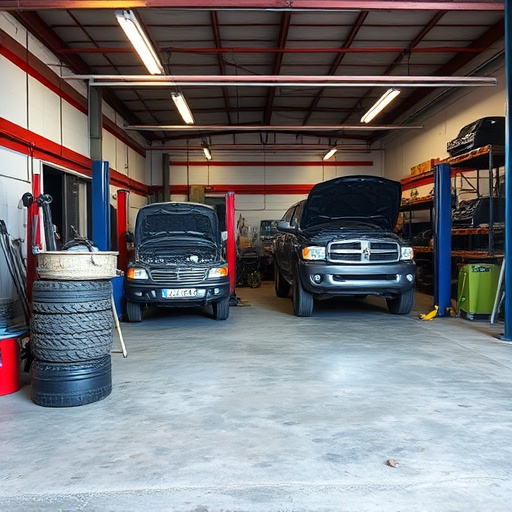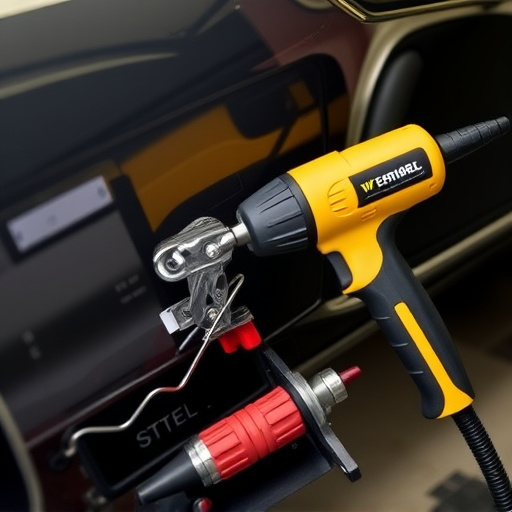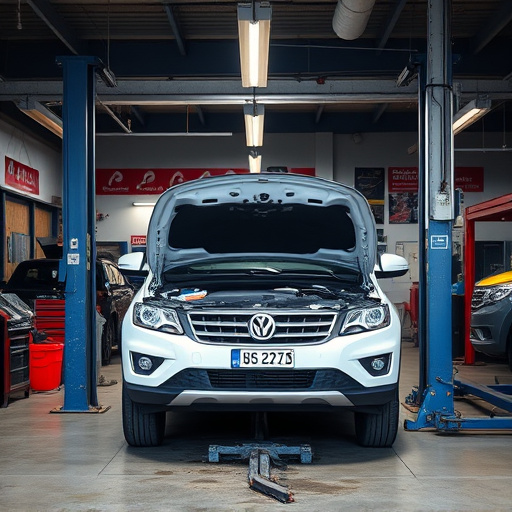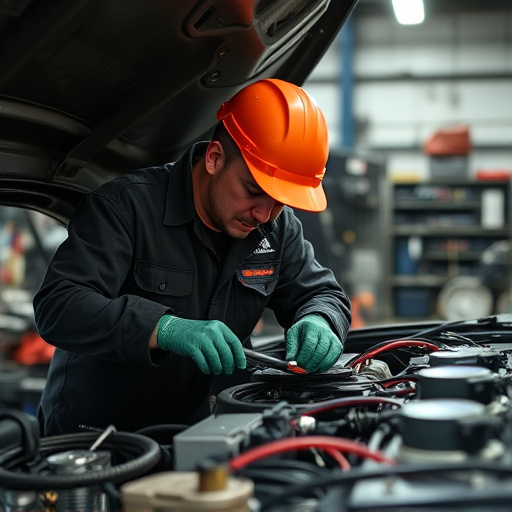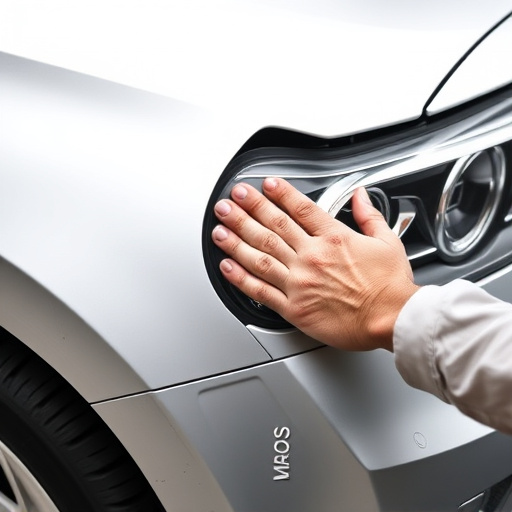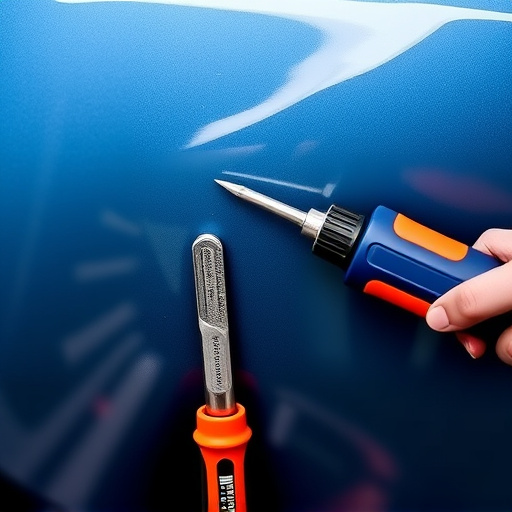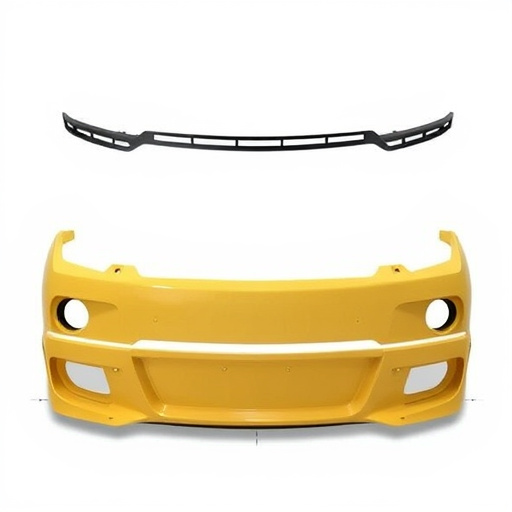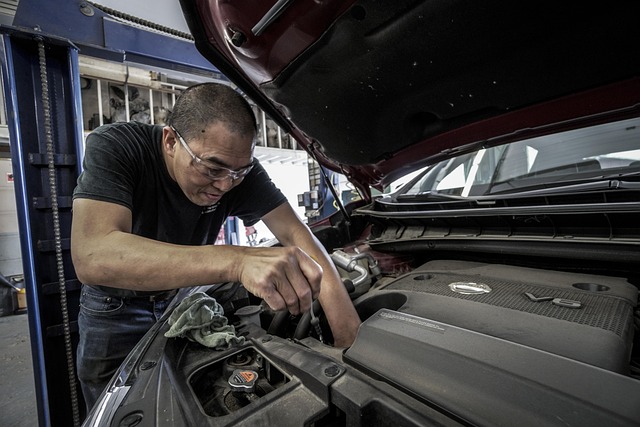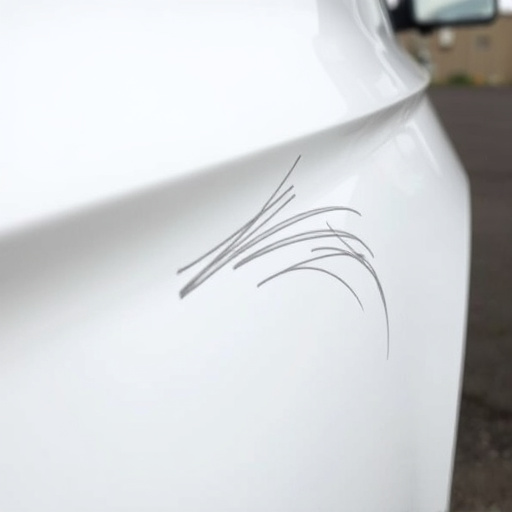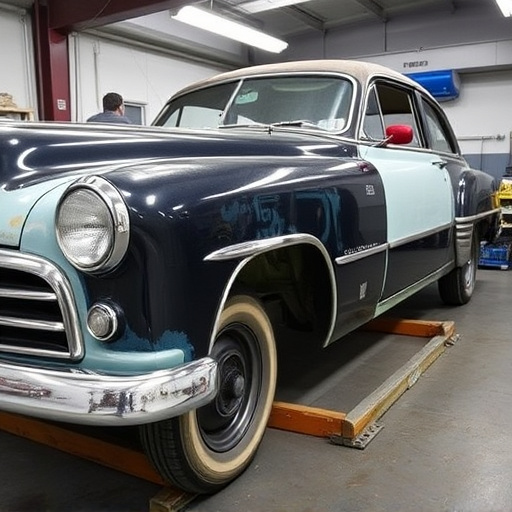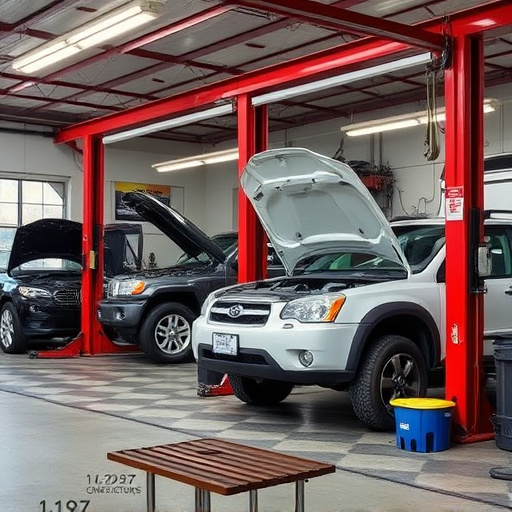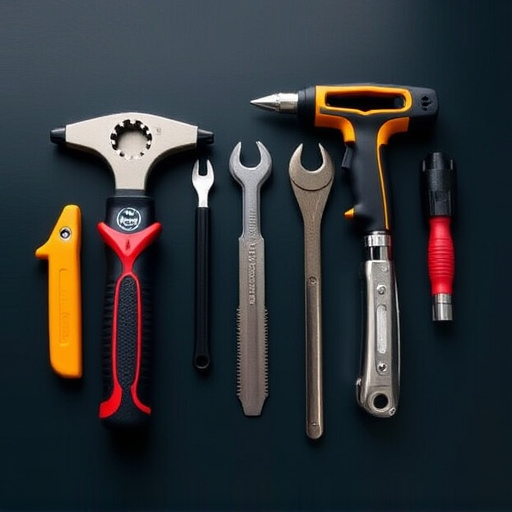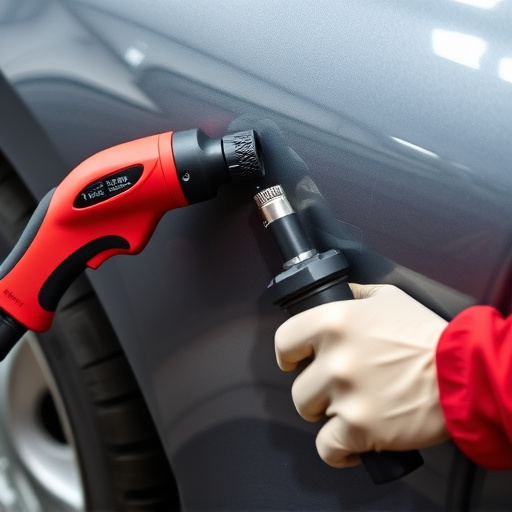Weld nugget quality is crucial for resistance spot welding, a key process in automotive manufacturing and collision repair. Technicians assess weld integrity through physical measurements and non-destructive testing (NDT) methods to ensure structural soundness and aesthetic appeal. Best practices include using high-quality electrodes, maintaining clean surfaces, calibrating machines accurately, and setting consistent parameters. Regular equipment maintenance and skilled technicians with proper training enhance weld nugget quality, ensuring structurally sound results in automotive repairs.
In the realm of manufacturing, ensuring weld quality is paramount, especially in resistance spot welding (RSW). This article delves into the intricate process technicians employ to gauge the integrity of weld nuggets—the crucial bonds formed during RSW. We explore the significance of weld nugget quality, dissecting techniques from visual inspection to advanced testing methods. Additionally, we provide best practices to help professionals optimize their processes and consistently deliver high-quality welds.
- Understanding Weld Nugget Quality in Resistance Spot Welding
- Techniques Used to Measure and Evaluate Weld Nugget Quality
- Best Practices for Ensuring Optimal Weld Nugget Quality
Understanding Weld Nugget Quality in Resistance Spot Welding

Weld nugget quality is a critical aspect of resistance spot welding, a process widely used in automotive manufacturing and collision repair services. It refers to the strength and integrity of the weld joint formed when an electric current passes through a conductive material, causing it to melt and fuse together. In the context of auto collision centers, ensuring high-quality weld nuggets is essential for structural integrity and safety.
Technicians assess weld nugget quality by examining various factors such as weld depth, width, and shape. A well-formed weld nugget should have a consistent diameter throughout its height, with no signs of porosity or cracks. Proper welding techniques, including correct current settings and tool positioning, are vital to achieving optimal nugget quality. This is particularly important in collision repair, where precision and reliability are paramount to ensuring the vehicle’s structural integrity after repairs.
Techniques Used to Measure and Evaluate Weld Nugget Quality
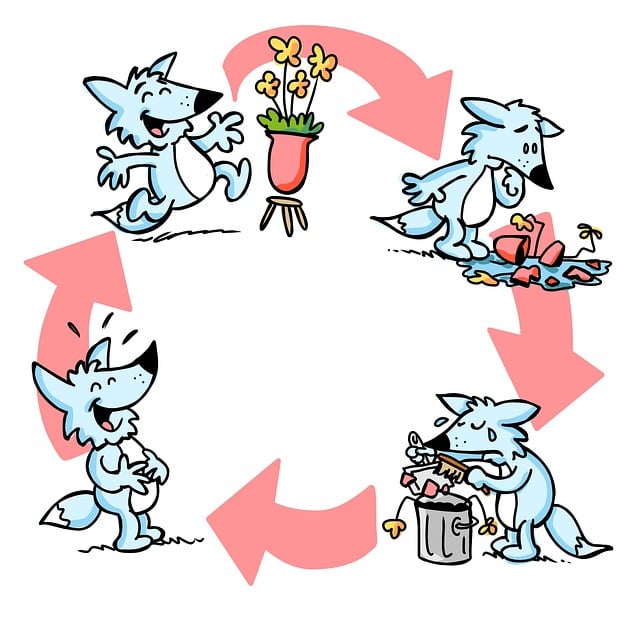
Technicians employ various techniques to measure and evaluate weld nugget quality in resistance spot welding. One common method involves using a microgage or caliper to gauge the dimensions of the weld nugget, ensuring it meets the specified size parameters. This physical measurement provides an immediate indication of the weld’s integrity.
Additionally, non-destructive testing (NDT) methods such as ultrasonic testing and eddy current inspection are employed. These advanced techniques allow technicians to assess the internal structure and integrity of the weld without causing damage. In the context of car repair services, paintless dent repair, and body shop services, maintaining high weld nugget quality is paramount to ensure structural strength and aesthetics, thereby upholding the overall quality of automotive craftsmanship.
Best Practices for Ensuring Optimal Weld Nugget Quality

To ensure optimal weld nugget quality in resistance spot welding, technicians should adhere to best practices that span across preparation, setup, and execution. First, using high-quality electrodes and maintaining them properly is paramount. Cleanliness is key; ensuring the workpiece surfaces are free from debris or contaminants prevents interruptions during the welding process. Proper machine calibration and consistent parameter settings also play a significant role in achieving repeatable and high-quality welds. Technicians should regularly inspect and maintain their equipment to guarantee accuracy.
Additionally, training and experience are invaluable. Skilled technicians understand the nuances of different metal types and can adjust parameters accordingly. In a vehicle body shop or auto repair service, where precision is paramount, consistent practice and adherence to these best practices yield consistent results. This not only enhances the structural integrity of car dent repairs but also ensures the overall quality of auto repair services provided.
In conclusion, ensuring high-quality weld nuggets in resistance spot welding is paramount for structural integrity. By understanding the nuances of weld nugget quality and employing precise measurement techniques, technicians can consistently achieve optimal results. Adhering to best practices, including utilizing advanced inspection tools and maintaining strict process controls, allows for the production of robust, reliable joints, meeting industry standards and enhancing overall manufacturing efficiency.
